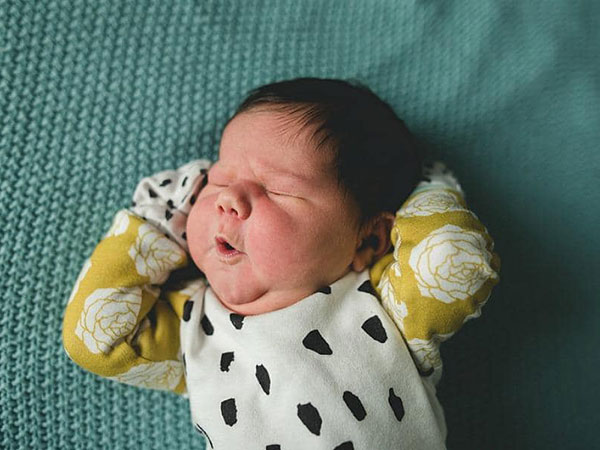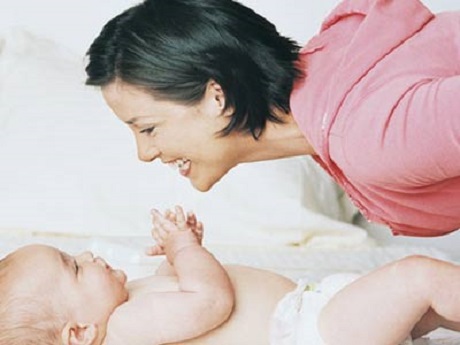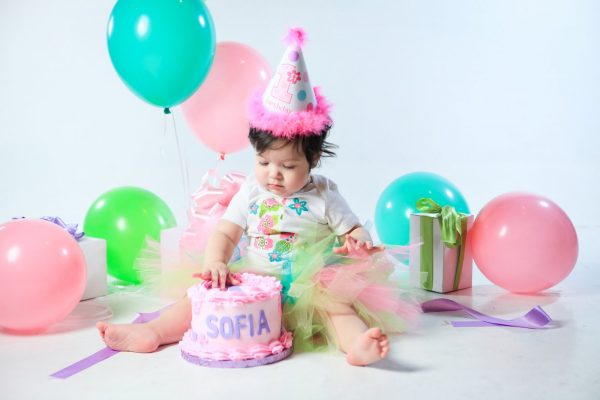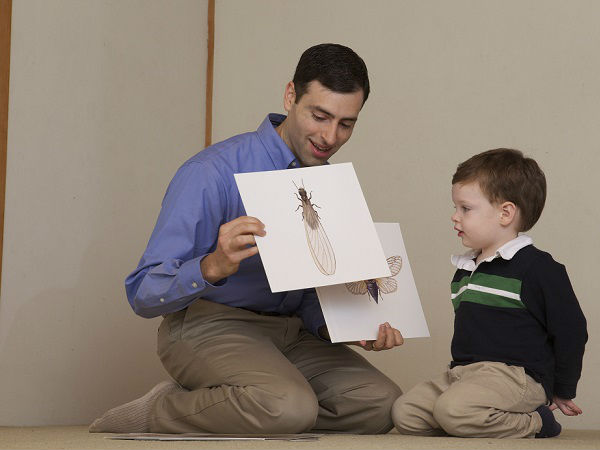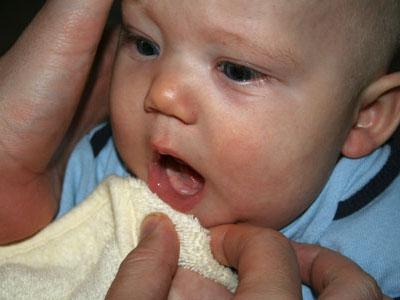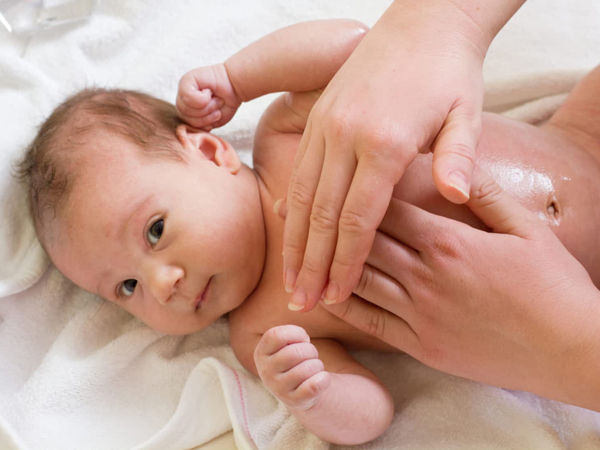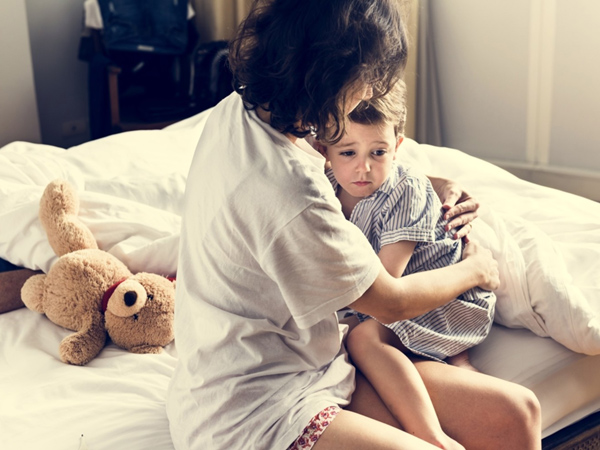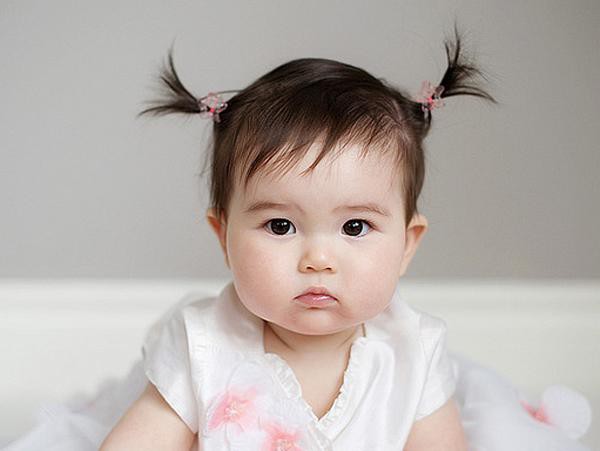Caring for a newborn umbilical cord requires maternal experience as well as carefulness. If left to the umbilical cord of a newborn baby after falling off it has a bad smell and infection can be very dangerous.
content
When the baby's umbilical cord falls off
A newborn umbilical cord bleeds after falling out
A newborn baby has a yellow discharge after its umbilical discharge
A newborn umbilical cord has a bad smell after falling
A newborn umbilical cord has a bad smell and pus after falling
The newborn umbilical cord is protruding
The umbilical cord of a newborn baby has a bad smell due to infection
Umbilical tetanus
Umbilical hernia
Umbilical cord tumors
In a period of 5 -10 days, the newborn umbilical cord falls off. If cared for properly, bacteria can invade causing infection. So, after a newborn baby's umbilical cord smells bad, bleeding, oozing, what should the mother do? Let's find out.
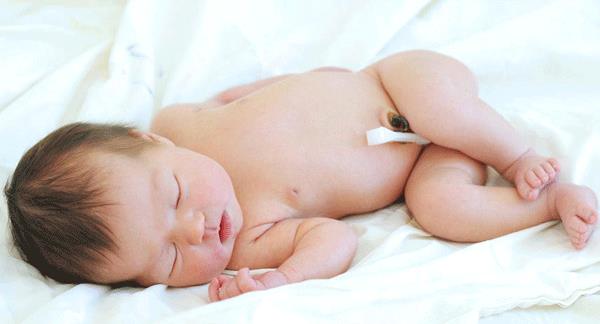
Before and after the umbilical cord falls, the mother needs to clean the umbilical cord every day
When the baby's umbilical cord falls off
The process of umbilical cord loss in a newborn will take place about 7-10 days after birth, happening naturally, without any intervention.
Mom needs to take care of the baby's navel very carefully and scientifically. Because if not, the umbilical cord after falling will have a bad smell, infection ... Accordingly, the mother should follow the following process:
Keep the base of the belly button clean
Keep the base of the belly button dry
Bathing for babies
Be careful when changing diapers
Choose the right outfit
Let the base of the belly button fall naturally
A newborn umbilical cord bleeds after falling out
Things you need to do when your newborn baby's umbilical cord smells bad and bleeds is:
Use a cotton swab to dry the blood. Mother should do it gently to avoid hurting the baby.
Keep your navel and surrounding skin clean and dry
Do not rely on the plaques on the baby's navel, it will cause the umbilical cord to bleed
Do not block your belly button too tightly
Clean the umbilical cord with cool, boiling water 1 to 2 times a day
Do not use shower gel or fragrance oil on your baby's navel.
If your belly button smells bad or bleeding continues to get it to your pediatrician as quickly as possible.
A newborn baby has a yellow discharge after its umbilical discharge
This phenomenon usually does not arise from maternal umbilical care for a newborn, but from a medical condition. Specifically, the baby has umbilical lymph node buds (granuloma), the nature of these shoots is granulation tissue, fibroblasts, small blood vessels. This disease is not too dangerous if treated early. On the contrary, it can lead to a high risk of infection.
A newborn umbilical cord has a bad smell after falling
Newborns need 7 to 10 days or more for the cord to dry and fall off. During this time, the navel is like a door that has not yet been closed. If the mother does not clean properly and properly, it will lead to infection, paving the way for bacteria to enter the body. Bacterial infections are the main cause of a bad smell to a newborn baby's umbilical cord.
To prevent the newborn umbilical cord, after falling, has a bad smell, do not forget the following important notes:
Regularly clean baby's umbilical cord with 1% iodine alcohol and hydrogen peroxide after bathing.
Change diapers often. If using cloth diapers, mothers should wash the baby's diapers with soap and dry in the sun to kill harmful bacteria.
Wash your hands well before cleaning the umbilical cord.
Change the umbilical bandage every day after bathing your baby.
If the umbilical bandage is soaked with feces or urine, a new bandage must be changed immediately.
Babies need to be bathed with cool boiled water in the first week of life.
Ensure sterile before and after birth, use sterile tools to cut and tie the umbilical cord.
To allow the navel to dry quickly and fall off quickly, the mother can leave the area open and not covered.
Avoid using folk remedies without the prescription of a doctor to sprinkle it on the baby's belly button.
To early detect cases of newborn umbilical cord with pus, mothers need to monitor the progress of the umbilical recovery, especially observing the baby's umbilical leg every day.
A newborn umbilical cord has a bad smell and pus after falling
A purulent newborn umbilical cord is a condition in which the baby's umbilical cord is infected with pus-producing bacteria. Since the umbilical cord is connected with the blood vessels, any damage to this area will cause negative effects on the blood and internal organs of the child.
Some of the common causes of this case are parents who have not properly cleaned the umbilical cord such as the umbilical bandage is too tight, not cleaning the umbilical cord often, forgetting to clean hands before cleaning the umbilical cord, using use folk remedies to sprinkle it on the umbilical cord without a doctor's appointment ...
Carry out the same care steps as a newborn umbilical cord, after a drop has a bad smell, the pus will soon "disappear".
The newborn umbilical cord is protruding
Also known as umbilical hernia . Umbilical hernia occurs most often in premature or low birth weight babies. This defect occurs more often in girls.
What to Identify: A circular mass appears at the place of the navel. You can see this bulge and feel it when you press gently on the navel area.
When detecting this abnormality, the mother should take the baby to the doctor to receive timely advice. In cases diagnosed as mild hernias (herniation hole is less than 2cm in diameter, the child is still eating and sleeping normally, without pain, without crying), there is no need to worry, the hernia hole can heal on its own. again when the baby is 12-24 months.
The umbilical cord of a newborn baby has a bad smell due to infection
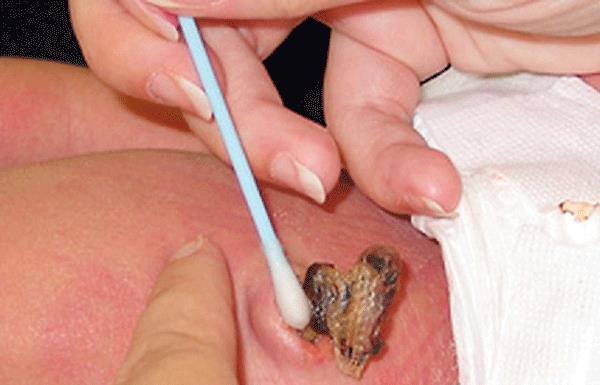
This is one of the quite common diseases that causes the umbilical cord of a newborn baby to smell bad after falling and drain pus. The reason is that the mother is afraid of hurting the baby, so she does not dare to touch the navel, but uses a bandage sealed, the baby's navel is wet, difficult to drain moisture, creating favorable conditions for bacteria to develop and cause infection.
Identifying signs: Swollen and red belly, umbilical cord oozing, pus or still wet after falling, navel smells bad, redness of skin around navel, navel bleeding
There are 3 main levels when a child has an infection:
Grade 1: Redness is localized at the base of the navel, normal skin around the belly button
Grade 2: Redness around the belly button spread to the skin, diameter> = 2 cm
Grade 3: Redness around the umbilical cord spread to the skin,> 2 cm in diameter, not accompanied by phlebitis
Treatment: After taking the child to medical facilities for examination, the mother should pay attention in how to care for the baby umbilical cord. Basically, the therapists will advise you to follow these steps.
After bathing your baby. Mom wash her hands, wear masks, prepare tools
Raise the umbilical cord with a sterile hand, observe the umbilical cord, umbilical cord, the cut umbilical cord section and the skin around the navel, note any abnormalities such as are not
Use a sterile cotton swab soaked in antiseptic solution to wipe around the umbilical base, from the base of the umbilical cord to the umbilical cord, clamp the umbilical cord and the cross section of the umbilical cord. Then disinfect from the umbilical base to the skin around the navel

Newborn navel smells bad, what to do? How newborn mothers should handle when their umbilical odor is bad and what causes this phenomenon is one of the top concerns of new mothers.
Umbilical tetanus
The reason is that Clostri diumtetani bacteria enter the child's body through the umbilical cut. Regarding symptoms, there are two main stages that mothers need to observe carefully for early detection:
Incubation period: The average time is about 7 days, depending on the level of toxins secreted by bacteria may last longer. The signs are not clear.
Full-blown period: Infants have a high fever of about 38 - 39 degrees Celsius, stop feeding, fussy and become more and more stiff, and gradually appear convulsive and spastic. Every time there is a seizure, the infant's face is wrinkled, foamy mouth, hands are clenched. young.
Treatment: If the baby starts to stop breastfeeding in the time when the umbilical cord is not released, the mother needs to think about this umbilical disease and soon send her to the doctor for prompt treatment. Advice from top experts in this case:
Children should be placed in a warm bed, away from noise and light
Ensure demand for water, electrolytes and energy by intravenous infusion
Breastfeed or specific milk through a gastric tube
Prophylaxis of pneumonia caused by inhalation of mucus from the oropharynx by feeding little or no food if vomiting persists
Clean the navel with hydrogen peroxide. Anti-tetanus serum resistance from 10,000 - 20,000 units / day

6 Signs of Baby Danger The first time you have a baby, you will have a lot of worries. Although it is not necessary to "panic" with any minor changes of the baby, the mother should not ignore it, especially for the following signs.
Umbilical hernia
Usually, after 7 days, if well cared for, a newborn's umbilical cord gradually shrinks and falls off, the wound heals and forms the baby's umbilical cord. The hole in the abdominal wall where the umbilical cord passes will close on its own as the baby gets older. Umbilical hernia occurs when the abdominal muscles do not close tightly.
What to Identify: A circular mass appears at the place of the navel. The hernia can be enlarged when a baby cries, coughs, pulls out to pass, or sits up.
Treatment: When a child is 1 year old, the umbilical hernia will resolve on its own, the disease does not cause pain as well as dangerous complications. In cases where surgery is required when the umbilical hernia persists up to 5 years old, causing symptoms of congestion
Umbilical cord tumors
This is a delayed epidermalization after umbilical cord loss that causes overgrowth of seed tissue, often occurring in babies with delayed umbilical cord loss.
Identifying signs: The baby loses the umbilical cord late, the granulomas are pale red, pale yellow oozing in the umbilical region, the pus is foul if there is superinfection.
Treatment: If small granulomas are burned with 75% silver nitrate (Ag NO3) 2 times / week for 4 weeks. You should have a healthcare professional come home for this procedure to avoid burning around the umbilical cord. Need to apply vaseline around the navel before performing the operation to avoid burns if the drug touches around.
After a baby's belly button falls off, a bad smell, discharge of pus, or bleeding can be indicative of many medical conditions. Mom, please pay attention to the signs on the baby's navel to promptly take the baby to the doctor.

